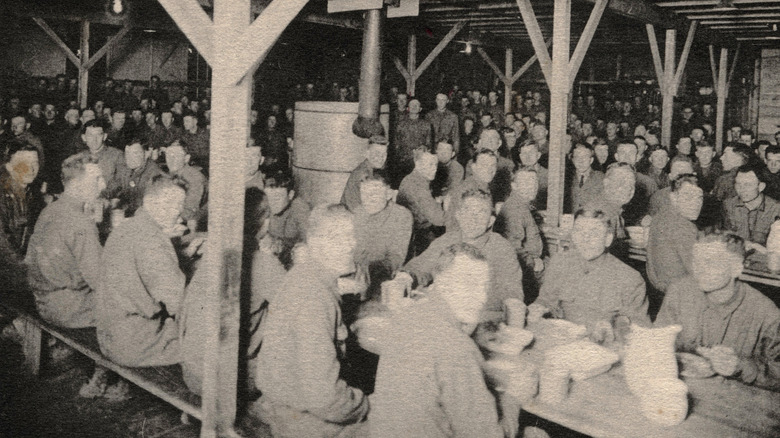The Old-School Breakfast Staple That Fueled The US Army
Feeding a group as large and active as the U.S. Army is undoubtedly a challenge, one that military leaders have had to confront since the earliest days of war. In these situations, the solutions may not always be pretty, even if they're effective. Creamed chipped beef on toast (commonly known by the unappetizingly profane nickname "S*** on a Shingle," or S.O.S for short) is undoubtedly one of those solutions. For much of the 20th century, it was a staple on Army menus both at home and abroad.
A typical creamed chipped beef on toast recipe involves sautéing thin slices of chipped beef (a dried, pressed, salted meat product that often had to be soaked in water before use) in butter before creating a simple, creamy pan sauce with flour and milk. This mixture serves as the first "S" in the memorable nickname. It's served on toasted bread, representing the second "S." It first appeared in Army cooking literature in 1910, where it was sized to feed 60 men with 15 pounds of beef. This preparation also inverted a more familiar recipe by directing cooks to make the gravy first, followed by the meat.
The dish offered several advantages for military mess halls. First, as evidenced by the size of the recipe, it was easy to prepare in large quantities. It's also made from relatively common ingredients like butter and flour, along with easy-to-store and easy-to-transport components like chipped beef and evaporated milk.
Decades of strong defense followed by a quiet retreat
Creamed chipped beef on toast grew in popularity and remained commonplace through both World Wars, as well as the Korean and Vietnam Wars, even as technology allowed advances in mass cooking and field cuisine. Unfortunately for old-school G.I.s (and those interested in nostalgic food), the S.O.S. dish has undeniably joined the ranks of old-school breakfasts you don't see people eating today, alongside milk toast and hoecakes.
While the exact timeline isn't clear, the military switched over at some point to a similar but distinct dish using leaner, more familiar meats like ground beef or turkey instead. This isn't particularly surprising, considering the rules the U.S. Army has about food that focus on variety and nutrition-rich selections. However, S.O.S likely made it into (or at least close to) the 21st century, with some reports indicating that it was served for nostalgic reasons as late as 1999.
Although it may no longer appear regularly on military plates, there's no denying the importance of this humble, often under-appreciated dish. Those looking for a simple yet satisfying breakfast should think like a soldier and whip up a batch to try for themselves.

